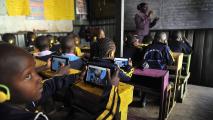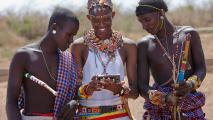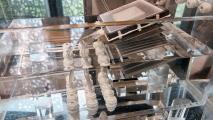What felt like a Silicon Valley fever dream — an armada of balloons, halfway to heaven, beyond the reaches of commercial flight, solar-powered and bestowing internet where there is none — has winked into existence, as Alphabet’s Loon balloon-based internet service began beaming internet in Kenya on July 7.
The initial service region, spanning over 50,000 square km, has already connected over 35,000 unique users, Loon CEO Alastair Westgarth wrote in a Medium post.
The Loon Balloon Project
Begun in 2011 in stealth mode and announced in 2013, Loon’s mission is simply to bring the internet to people without it. By deploying balloons over underserved or difficult-to-innervate areas, telecom companies can have a cheaper alternative to lines and towers for offering internet access. The balloon-based internet may also help quickly restore communication in disaster situations.
A network of Loon balloon platforms — each carried by a bag roughly the size of a tennis court, steered by solar power, and controlled by machine learning algorithms — will build what Westgarth characterizes as a “third layer” of connectivity, between cell towers and satellites.
Loon is now beaming 4G LTE internet to Telkom Kenya customers. Westgarth reports downlink speeds of 18.9 Mbps and uplink speeds of 4.74 Mbps, with users accessing YouTube and WhatsApp, as well as texting, emailing, and surfing. Loon will expand to a roughly 35 balloon network in the coming weeks.
Kenya marks the first commercial use of the Loon balloon-based internet; Loon has already had emergency deployments after Hurricane Maria stripped cell towers from Puerto Rico in 2017 and areas impacted by Peru’s 8.0 magnitude earthquake in 2019.
Letting Air out of the Loon Balloon
There’s controversy over this initial market, though, the New York Times reports. Kenya already has a robust internet user base compared to other developing nations, and the region beneath the Loon balloon system is already better serviced than more underserved regions to the north and northeast. People in the areas that could most use Loon also may not be able to afford the 4G LTE compatible phones required to reap the benefits.
“I feel this solution is inordinate with the problem being solved,” Phares Kariuki, the chief executive of data management company Node Africa, told the Gray Lady.
“Loon is a fringe solution for places where last-mile connectivity will be too expensive because the people are sparsely populated,” Mr. Kariuki said. “It’s not the best solution for this market.”
Loon defended the choice by noting Kenya’s willingness to try new technologies.
“Kenya is an ideal place for us to begin this new era of stratospheric communications,” Westgarth emailed the Times. “The country has been incredibly innovative about finding new ways to connect unconnected populations. As a new, innovative technology, this is a great fit.”
The founder of Nairobi tech research firm Nendo, Mark Kaigwa, took a more positive view, telling the Times that the ability for people to connect to the internet is essential — a position sharpened by the COVID-19 pandemic — and that it should be bolstered especially now.






